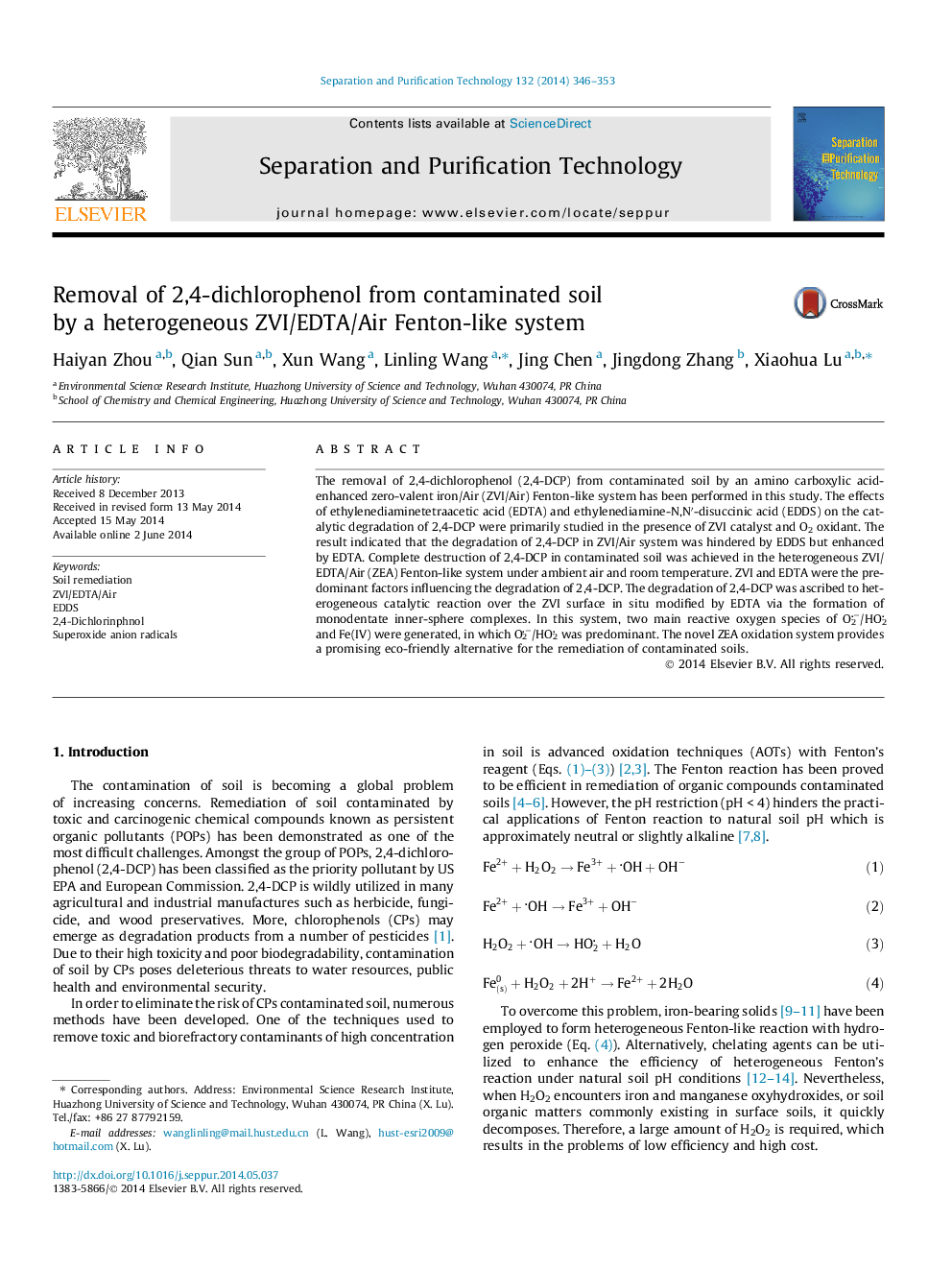| Article ID | Journal | Published Year | Pages | File Type |
|---|---|---|---|---|
| 641028 | Separation and Purification Technology | 2014 | 8 Pages |
•Effect of EDTA and EDDS addition to ZVI/Air system on degradation of 2,4-DCP was investigated.•Effective removal of 2,4-DCP in contaminated soil was achieved by the heterogeneous ZVI/EDTA/Air (ZEA) system.•O2−/HO2 was the main reactive oxygen species in ZEA system.•Pathways for 2,4-DCP and EDTA degradation by the ZEA system were proposed.
The removal of 2,4-dichlorophenol (2,4-DCP) from contaminated soil by an amino carboxylic acid-enhanced zero-valent iron/Air (ZVI/Air) Fenton-like system has been performed in this study. The effects of ethylenediaminetetraacetic acid (EDTA) and ethylenediamine-N,N′-disuccinic acid (EDDS) on the catalytic degradation of 2,4-DCP were primarily studied in the presence of ZVI catalyst and O2 oxidant. The result indicated that the degradation of 2,4-DCP in ZVI/Air system was hindered by EDDS but enhanced by EDTA. Complete destruction of 2,4-DCP in contaminated soil was achieved in the heterogeneous ZVI/EDTA/Air (ZEA) Fenton-like system under ambient air and room temperature. ZVI and EDTA were the predominant factors influencing the degradation of 2,4-DCP. The degradation of 2,4-DCP was ascribed to heterogeneous catalytic reaction over the ZVI surface in situ modified by EDTA via the formation of monodentate inner-sphere complexes. In this system, two main reactive oxygen species of O2−/HO2 and Fe(IV) were generated, in which O2−/HO2 was predominant. The novel ZEA oxidation system provides a promising eco-friendly alternative for the remediation of contaminated soils.
Graphical abstractFigure optionsDownload full-size imageDownload as PowerPoint slide
